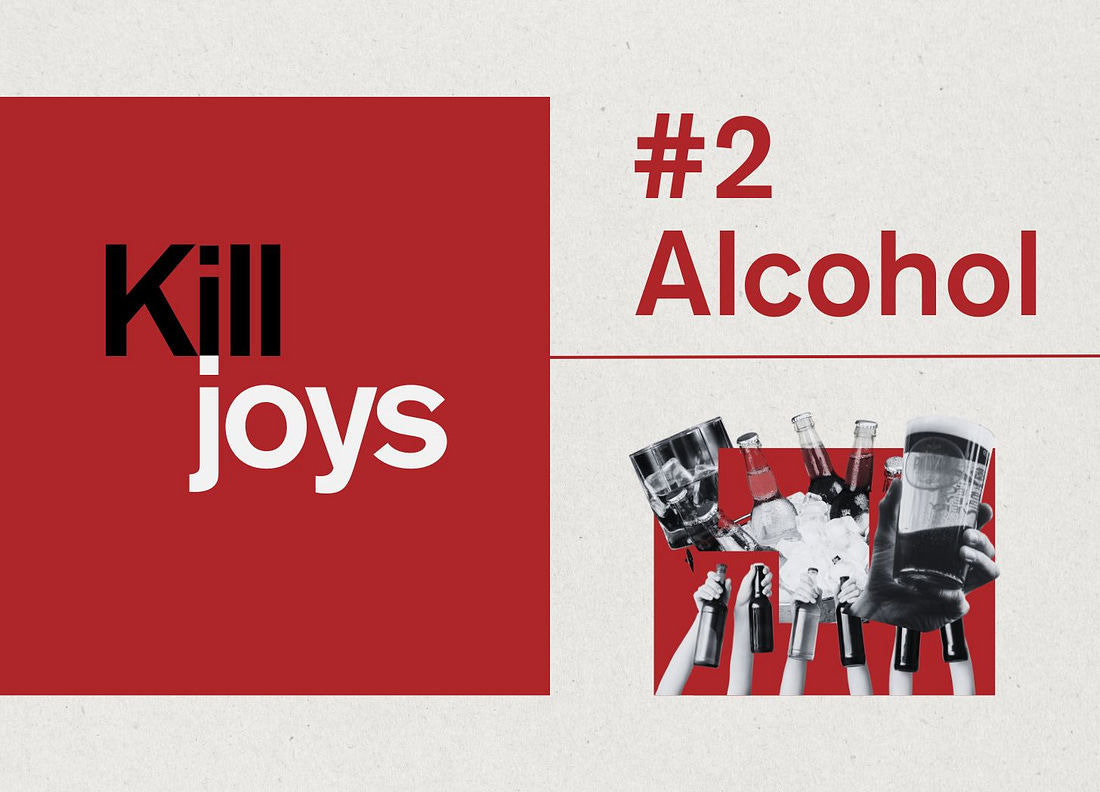|
In this series of posts, the IEA’s Dr Christopher Snowdon explains the background and beliefs of the anti-smoking, anti-alcohol, anti-obesity and anti-gambling movements in the UK.
This is Part 2, on alcohol. Read Part 1 on tobacco here.
For most of the twentieth century, alcohol researchers in Britain and much of Europe tended to think that ‘the drinking of the general population and the problematic drinkers was inherently different’. Alcohol policy focused on alcoholism and drunkenness, with alcoholism seen as a disease, and drunkenness seen principally as a public order issue. This implied targeted interventions for a minority of troubled or troublesome individuals. In contrast to the Nordic countries, which had experienced or flirted with prohibition in the 1920s, the UK favoured education and treatment, albeit with alcohol taxes and licensing laws that were restrictive by the standards of most European countries.
This began to change in the 1970s when a belief in ‘the collectivity of drinking cultures’ became more prominent. Borrowing from a theory outlined by the French statistician Sully Ledermann in 1956, some alcohol researchers and sociologists argued that the amount of heavy drinking and alcohol-related harm in a society was directly linked to per capita alcohol consumption. Crucially, they did not explain this as being the result of heavy drinkers consuming a large quantity of alcohol (and thereby raising the mean), but by the entire distribution of consumption being determined by the mean. According to Ole-Jørgen Skog, ‘the population will tend to behave as a collective’ and will ‘move in concert up and down the consumption scale, thereby creating a close connection between the general level of consumption in the population and the prevalence of heavy use.’ This became known as the single distribution theory.
This movement led to Alcohol Control Policies in Public Health Perspective, a short book published in 1975 that came to be known as the Purple Book. Few books earn a nickname without being influential and the Purple Book quickly became the standard reference in the new ‘public health’ approach to alcohol. Two of its authors were British but most were Scandinavian and its driving force was the Finnish sociologist Kettil Bruun who was dismayed at the relaxation of alcohol control laws in his homeland in the late 1960s. After prohibition ended in Finland in 1935, the government introduced strict control measures and used coercion against those whom it branded alcoholics. Bruun disapproved of singling out individuals for ‘correction, treatment, or rehabilitation’ and so, in one sense, his prescription was liberal, but the flip side to absolving individuals of blame was condemning the drinks industry for selling the product and blaming the government for allowing it to be easily bought. Seeing alcohol as a societal problem, the authors of the Purple Book saw supply-side, society-wide policies as the solution, including bans on marketing, heavy licensing restrictions and high taxes. In policy terms, this aligned them with the gospel temperance groups that had been in retreat since the collapse of Prohibition in the 1930s.
In the 1980s and 1990s, the single distribution theory was given support by the highly influential theories of the British epidemiologist Geoffrey Rose who argued that a whole host of health problems associated with heavy consumers (‘deviants’) at the tail of the distribution could be tackled by reducing consumption by the rest of society, thereby shifting the entire bell curve to the left. Restating the single distribution theory, he asserted that:
‘the number of heavy drinkers in a population keeps in almost perfect step with the alcohol consumption of Mr and Mrs Average, and hence there seems to be no way of reducing the dire problems of alcoholism that does not involve a general reduction of intake in the population as a whole’.
In practice, this meant that Mr and Mrs Average had to be coerced away from alcohol by the government alongside the heavy-drinking ‘deviants’. Or, to put it another way, that the majority had to be punished for the sins of a minority.
In a different but related argument, Rose further suggested that more lives could be saved by targeting a large number of people who have a slightly increased risk of death than by targeting a small number of people who have a greatly increased risk of death. He called this the ‘prevention paradox’.
Both the single distribution theory and the prevention paradox implied that policies aimed at reducing consumption at the population level were more effective than policies aimed at people who are at high risk; that ‘to help the minority the “normal” majority must change’ as Rose and Day put it. This became known as the ‘whole population approach’ and it had obvious appeal to reformers whose policies inevitably affected the entire population, such as tax rises and advertising bans. Supply-side controls on alcohol had been part of the temperance movement’s arsenal for over a century and similar measures were being used against tobacco with the aim of encouraging total abstinence.
The theories behind the whole population approach remained largely speculative, however, with mathematical formulae and extrapolations from unrelated health conditions substituting for real world evidence. It was easy to find exceptions to the ‘rule’ that consumption patterns move in the same direction for all groups of people at all times. Examples could be found of per capita consumption rising while alcohol-related harm fell and vice versa (Hallgren et al. 2012, Livingston et al. 2010). Moreover, whilst it could reasonably be assumed that the median smoker was putting their health at risk, this could not necessarily be said of consumers of other products, including alcohol, and it could therefore not be assumed that the health of moderate drinkers, let alone the health of ‘deviants’, would benefit from the average consumer drinking less.
Despite criticism from within the public health research community (e.g. Roche 1997, Uhl 2015, Raninen and Livingston 2020), the whole population approach has become the dominant model of alcohol control in public health. It has been explicitly endorsed by the World Health Organisation, many public health organisations, nearly all anti-alcohol pressure groups and some public sector organisations such as the National Institute for Health and Care Excellence which gives a textbook summary of the theory when it states that…
‘…the number of people who drink a heavy or excessive amount in a given population is related to how much the whole population drinks on average. Thus, reducing the average drinking level, via population interventions, is likely to reduce the number of people with severe problems due to alcohol.’
The key texts of the movement are the book Alcohol: No Ordinary Commodity by Babor et al. (2010) and the World Health Organisation’s Global Status Report on Alcohol and Health. Alcohol: No Ordinary Commodity has been described by Britain’s leading anti-alcohol campaigner, Ian Gilmore, as the ‘Bible’ and it is routinely cited by activist-academics when they need to show that their policy agenda is ‘evidence-based’. Three of its authors had helped write the Purple Book in the 1970s and all of them ‘uncompromisingly support a radical alcohol control approach and devalue health promotion-oriented prevention as well as professional alcoholism treatment’, as one of their critics puts it. Both Alcohol: No Ordinary Commodity and the WHO promote strict Scandinavian-style supply-side policy interventions targeting ‘the Three As’: affordability, availability and attractiveness (advertising is sometimes substituted for attractiveness). The WHO calls these the ‘best buys’ to underline their supposed cost-effectiveness.
It has been a remarkable coup for an agenda drawn up fifty years ago by ‘a motley bunch of sociologists dressing ourselves up as public health experts’ (as one of the Purple Book’s authors, Robin Room, self-deprecatingly described them). Tough, Nordic-style regulation of alcohol had become public health orthodoxy on the basis of a mathematical theory from the 1950s which even the whole population approach’s adherents no longer believed by the 1980s.
Today, the whole population approach is explicitly central to the Scottish government’s approach to alcohol policy, but the same cannot be said of the British government which continues to put the Home Office in charge of its alcohol strategy, a sign that it still sees alcohol as primarily a public order issue. Like the government and a large section of the public, alcohol companies tend to see drinking in the traditional paradigm, as a matter of individual responsibility, enjoyed harmlessly by the majority but a problem for a minority. Alcohol manufacturers and retailers usually resist supply-side measures which hinder their ability to compete in the market and instead favour lighter touch regulation, education and partnerships with government. This allows policy entrepreneurs from ‘public health’ to portray any challenge to their dominant narrative as an ‘industry argument’ and any policy defeat as a win for big business. The task for ‘public health’ policy entrepreneurs is, therefore, to neutralise traditional arguments and persuade decision-makers that the whole population approach and the policies derived from it are truly evidence-based.
Despite the insistence of alcohol control advocates that their policies are built on settled science, that is objectively not the case. Ceteris paribus, tax rises will lead to reduced consumption if passed through to consumers, but it cannot be assumed that this will lead to less alcohol-related harm at the population level. The evidence for other measures is weak. Siegfried and Parry (2019) conclude that ‘[r]obust and well-reported research synthesis is deficient in the alcohol control field despite the availability of clear methodological guidance.’ The Cochrane Collaboration found ‘a lack of robust evidence for or against recommending the implementation of alcohol advertising restrictions’.
Moreover, the experience of several countries, including the UK, which relaxed licensing restrictions without seeing an increase in alcohol-related problems, has undermined the case for clamping down on ‘availability’ (Vingilis et al. 2005, Fitzgerald and Mulford 1992, De Moira and Duffy 1995).
Strategically, the UK’s anti-alcohol movement has much in common with the anti-smoking movement, and there has been some conscious emulation. The All Party Parliamentary Group on Alcohol Misuse was formed in 2006 with the state-funded charity Alcohol Concern (the temperance equivalent of ASH) as its secretariat. In November 2007, in the wake of the smoking ban being introduced after pressure from the Smoke-free Coalition, the Alcohol Health Alliance was formed, bringing together 24 organisations to lobby for policies related to the affordability, availability and advertising of alcohol. Its members include the Institute of Alcohol Studies, a group set up in the 1980s by the Alliance House Foundation after the UK Temperance Alliance was disbanded. The Alliance House Foundation is the direct descendant of the United Kingdom Alliance for the Suppression of the Traffic in Intoxicating Liquors, a nineteenth century prohibitionist outfit. One of the Alliance House Foundation’s charitable objectives is to ‘spread the principles of total abstinence from alcoholic drinks’. Although it no longer demands legal suppression and says that ‘an alcohol free society can be reached by agreement’, it is reminder that gospel temperance remains a force in the alcohol policy debate.
Taking their cue from the anti-smoking lobby, the neo-temperance movement’s current priorities are to have cancer warnings put on alcohol packaging (despite liver disease being the main health threat associated with drinking) and to promote the idea that there is ‘no safe level’ of alcohol consumption (despite strong evidence that moderate drinking reduces heart disease, stroke and diabetes risk). They have had some successes in Scotland and Ireland, both of which now have minimum pricing, but they have often been frustrated in England where politicians are more wary of annoying the 80% of adults who consume alcohol.
You’re currently a free subscriber to Insider. For the full experience, upgrade your subscription.
Paid subscribers support the IEA's charitable mission and receive special invites to exclusive events, including the thought-provoking IEA Book Club.
We are offering all new subscribers a special offer. For a limited time only, you will receive 15% off and a complimentary copy of Dr Stephen Davies’ latest book, Apocalypse Next: The Economics of Global Catastrophic Risks.

